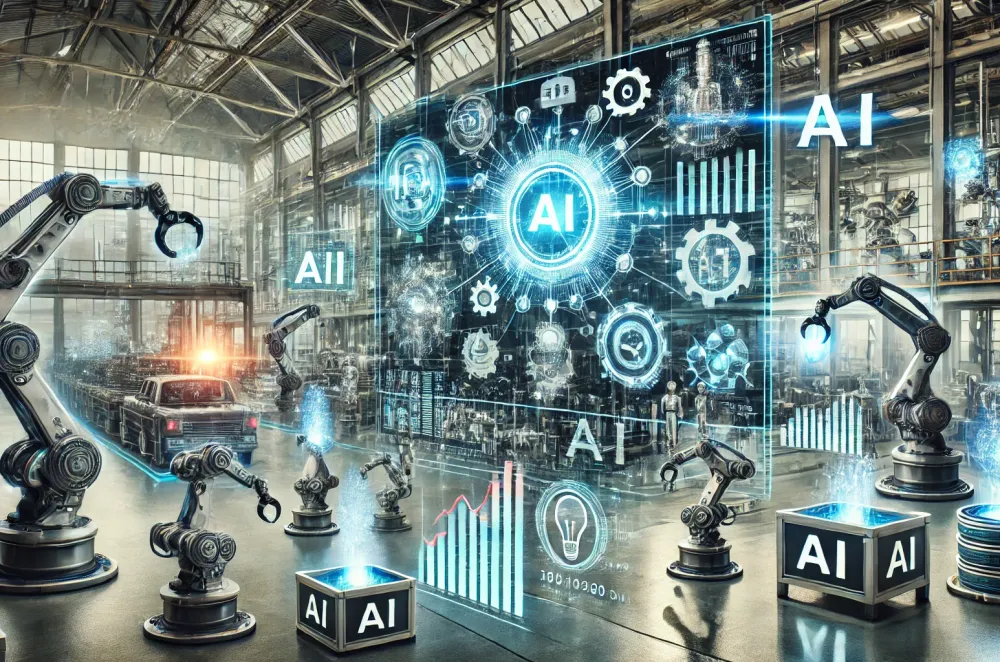Future Trends in Manufacturing Analytics Software: AI, Machine Learning, and Beyond
The manufacturing industry is undergoing a digital transformation, driven by advances in manufacturing analytics software. This post explores the future trends in manufacturing analytics software, highlighting how AI, ML, and other cutting-edge technologies will shape the future of manufacturing
Future Trends in Manufacturing Analytics Software: AI, Machine Learning, and Beyond
AI and Machine Learning: Enhancing Predictive Analytics
AI and ML are poised to take predictive analytics in manufacturing to the next level, offering deeper insights and more accurate predictions.
- Advanced Predictive Models: AI algorithms can analyze vast amounts of data from various sources, identifying patterns and trends that human analysts might miss. This leads to more accurate predictions of equipment failures, maintenance needs, and production bottlenecks.
- Real-Time Data Processing: ML models can process real-time data from IoT sensors and other devices, providing immediate insights and allowing for rapid response to emerging issues.
- Continuous Learning: ML systems can continuously learn from new data, improving their predictive accuracy over time and adapting to changing conditions in the manufacturing environment.
Case Example
A factory uses AI-driven predictive analytics to monitor and predict the lifespan of critical machinery. The system analyzes data from multiple sensors, historical maintenance records, and operational parameters to forecast when equipment is likely to fail. This allows for timely maintenance, reducing downtime and extending equipment life.
Automation: Streamlining Manufacturing Processes
Automation, powered by AI and ML, is transforming manufacturing processes, making them more efficient and less reliant on human intervention.
- Smart Robotics: AI-enabled robots can perform complex tasks with high precision and adapt to new tasks through machine learning. These robots can work alongside humans, enhancing productivity and safety.
- Automated Quality Control: Vision systems powered by AI can inspect products at high speed, identifying defects with greater accuracy than manual inspections. This ensures higher quality and consistency in the manufacturing output.
- Intelligent Process Control: AI algorithms can optimize production processes in real-time, adjusting parameters to maintain optimal performance and reduce waste.
Case Example
An electronics manufacturer implements AI-powered robotic arms for assembly and quality inspection. These robots can quickly adapt to different product lines, ensuring consistent quality and significantly reducing production time.
Decision-Making Processes: Empowering Data-Driven Decisions
AI and ML are enhancing decision-making processes by providing manufacturers with actionable insights derived from complex data analysis.
- Predictive Decision-Making: AI systems can simulate various scenarios based on historical and real-time data, helping managers make informed decisions about production schedules, inventory management, and resource allocation.
- Prescriptive Analytics: Beyond predicting outcomes, prescriptive analytics suggests specific actions to achieve desired results. For example, it can recommend optimal production schedules or maintenance activities to maximize efficiency and minimize costs.
- AI-Assisted Planning: AI can analyze market trends, customer demands, and supply chain dynamics to assist in strategic planning and demand forecasting, ensuring manufacturers stay ahead of the curve.
Case Example
A car manufacturer uses AI to optimize its supply chain. The AI system analyzes data from suppliers, market demand, and production capacity to forecast future needs and adjust orders accordingly. This minimizes inventory costs and ensures timely availability of parts.
Beyond AI and Machine Learning: Emerging Technologies
While AI and ML are at the forefront of manufacturing analytics, other emerging technologies are also set to make a significant impact.
- Edge Computing: By processing data closer to where it is generated, edge computing reduces latency and bandwidth use, enabling faster decision-making and real-time analytics in manufacturing environments.
- Blockchain: Blockchain technology can enhance transparency and security in supply chains, ensuring traceability of materials and products from origin to end-user.
- Digital Twins: Digital twin technology creates virtual replicas of physical assets, allowing manufacturers to simulate and optimize processes, predict outcomes, and prevent issues before they occur.
Conclusion
The future of manufacturing analytics software is bright, driven by advancements in AI, ML, and other emerging technologies. These innovations will enhance predictive analytics, automation, and decision-making processes, leading to more efficient, reliable, and flexible manufacturing operations. By embracing these trends, manufacturers can gain a competitive edge, improve operational performance, and drive continuous improvement in their processes.
Stay ahead of the curve by integrating AI, machine learning, and other cutting-edge technologies into your manufacturing analytics strategy and unlock the full potential of your operations!
Interested in digital transformation? Let's discuss!
